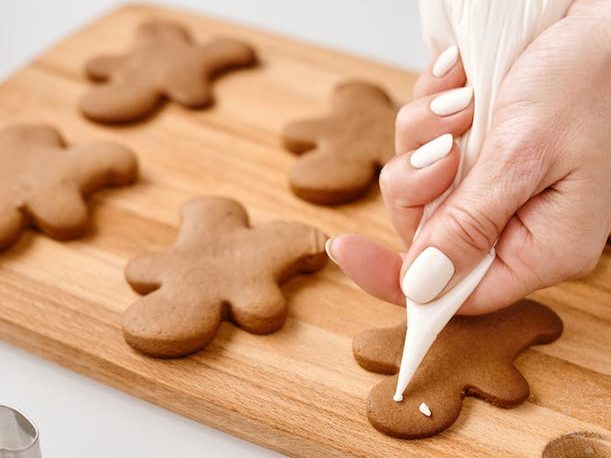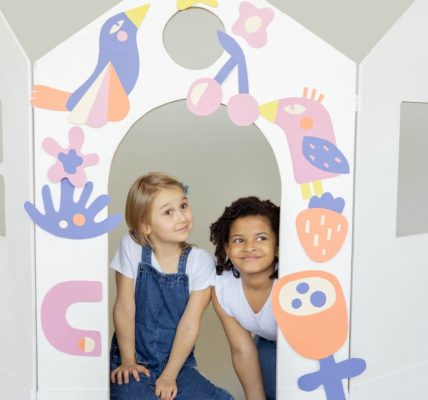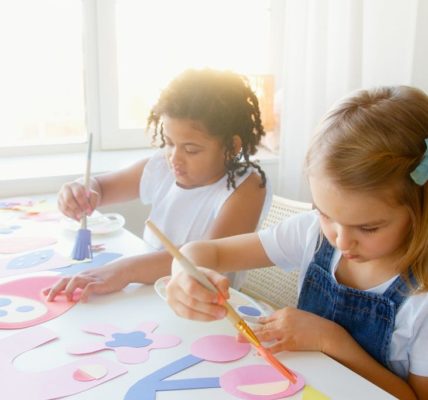
Unleashing Creativity: Homemade Crafts for Kids
As parents, we understand the importance of engaging our children in creative activities. Arts and crafts for kids provide a wonderful outlet for self-expression and imagination. Not only are homemade crafts enjoyable, but they also offer numerous benefits for our little ones.
The Importance of Arts and Crafts for Kids
Arts and crafts play a crucial role in a child’s development. They provide an opportunity for children to explore and experiment with different materials, textures, and colors. Through these creative activities, children can enhance their fine motor skills, hand-eye coordination, and cognitive abilities. Crafting also encourages problem-solving skills as children find innovative ways to bring their ideas to life.
Engaging in arts and crafts can also be a great bonding experience for families. It allows parents and children to spend quality time together, fostering stronger relationships and creating lasting memories. So, gather your materials and get ready to embark on exciting crafting adventures with your little ones.
Benefits of Homemade Crafts
Homemade crafts offer a wide range of benefits for children. Let’s take a look at some of the advantages:
-
Creativity and Imagination: Crafting encourages children to think outside the box and explore their creativity. It allows them to express their ideas and imagination freely, leading to the development of their unique artistic style.
-
Self-Expression: Through arts and crafts, children can express their thoughts, emotions, and experiences in a visual and tangible way. This helps build their self-confidence and self-esteem.
-
Fine Motor Skills: Engaging in activities like cutting, coloring, and gluing helps develop fine motor skills and hand dexterity. These skills are essential for tasks such as writing, buttoning clothes, and tying shoelaces.
-
Focus and Concentration: Crafting requires children to concentrate on the task at hand, enhancing their focus and attention span. This skill can transfer to other areas of their lives, such as schoolwork and daily activities.
-
Problem-Solving: When children encounter challenges or obstacles during a crafting project, they learn to find solutions and think critically. This problem-solving process nurtures their analytical thinking skills.
-
Sensory Stimulation: Crafts often involve exploring different textures, materials, and sensory experiences. This sensory stimulation is beneficial for children’s sensory development and can be particularly helpful for those with sensory processing differences.
By engaging in homemade crafts, children can reap these benefits while having fun and creating something unique. Explore our articles on creative projects for kids and diy crafts for children for exciting craft ideas to get started.
Unleash your child’s creativity and watch them flourish as they explore the world of arts and crafts. Whether it’s creating masterpieces with paint, constructing with recycled materials, or crafting with nature-inspired elements, there are endless possibilities for fun and learning. Enjoy the journey of crafting with your children and cherish the beautiful memories you create together.
Everyday Materials, Extraordinary Crafts
Let’s explore the world of paper crafts and discover how simple materials can be transformed into extraordinary creations. Paper crafts are a fantastic way to engage children in the joy of making and allow their creativity to soar. In this section, we will highlight two popular paper craft activities: origami animals and paper collage art.
Origami Animals
Origami, the ancient art of paper folding, is an exciting and educational craft activity for kids. With just a sheet of paper and a few folds, they can bring adorable animals to life. Origami not only enhances fine motor skills but also nurtures patience and concentration.
To get started with origami animals, you can find numerous origami tutorials online or in books specifically designed for children. Some popular origami animals for beginners include frogs, butterflies, and dogs. Encourage your child to experiment with different colors and patterns of paper to personalize their creations.
Origami animals can be used for imaginative play, displayed as decorations, or even gifted to friends and family. Engaging in this craft activity will not only provide hours of fun but also foster a sense of accomplishment and pride in your child’s artistic abilities. For more creative projects for kids, check out our article on creative projects for kids.
Paper Collage Art
Paper collage art is a versatile and engaging craft activity that allows children to explore their artistic abilities. It involves creating images by assembling various shapes, colors, and textures of paper. This craft encourages imagination, develops hand-eye coordination, and promotes visual storytelling.
To get started with paper collage art, gather a variety of colored paper, such as construction paper, scrapbooking paper, or even old magazines. Provide child-safe scissors and glue sticks for cutting and adhering the paper. Encourage your child to brainstorm ideas and create their own unique artwork.
The possibilities for paper collage art are endless. Children can create landscapes, animals, people, or even abstract designs. They can also incorporate other materials like ribbons, buttons, or fabric scraps to add more dimension and texture to their artwork. Displaying their creations at home or framing them can give children a sense of pride and accomplishment.
Engaging in paper crafts like origami animals and paper collage art not only provides an outlet for creativity but also encourages fine motor skills, concentration, and artistic expression. These activities can be enjoyed by children of all ages and can be adapted to suit various themes or occasions. For more DIY craft ideas for children, check out our article on diy crafts for children. Let’s unleash our imagination and create extraordinary masterpieces with the simplest of materials!
Recycled Crafts
Teaching kids about the importance of recycling and reusing materials can be both educational and fun. Recycled crafts provide an opportunity for children to get creative while also promoting sustainability. In this section, we will explore two exciting recycled craft ideas: bottle cap magnets and cardboard tube binoculars.
Bottle Cap Magnets
Bottle cap magnets are a simple and enjoyable craft that can be made using materials commonly found around the house. Gather a collection of bottle caps, which can be recycled from soda or water bottles, and let your imagination run wild!
To make bottle cap magnets, start by cleaning and drying the bottle caps. Next, gather colorful paper, foam shapes, stickers, or any other small decorative items. Cut out circles from the paper or foam to fit inside the bottle caps and let your child decorate them with their desired designs. They can draw pictures, create patterns, or even write inspiring messages.
Once the designs are complete, use a strong adhesive or glue to secure the decorated circles inside the bottle caps. Finally, attach a small magnet to the back of each bottle cap using glue or adhesive tape. Allow the magnets to dry completely before using them to display artwork, notes, or photos on your refrigerator.
Cardboard Tube Binoculars
Transforming cardboard tubes into binoculars is a fantastic way to encourage imaginative play. This craft is not only fun to make but also provides kids with a creative prop for outdoor adventures.
To create cardboard tube binoculars, gather two empty toilet paper rolls or paper towel rolls. Decorate the tubes with markers, paints, or stickers to give them a personalized touch. Encourage your child to use their imagination and make the binoculars unique and colorful.
Once the decorations are complete, hold the two tubes together side by side and secure them with duct tape or strong adhesive. You can also punch holes on the sides of each tube and thread a string or ribbon through them to create a strap, allowing your child to wear the binoculars around their neck.
With their newly crafted binoculars, children can embark on exciting imaginary adventures, exploring their surroundings and observing the wonders of nature. Encourage them to use their binoculars during outdoor walks or to spot birds and wildlife from a distance.
By engaging in recycled crafts, children not only exercise their creativity but also learn the value of repurposing materials and reducing waste. These activities promote an eco-friendly mindset while providing hours of entertainment. For more ideas on homemade crafts and creative projects for kids, explore our articles on diy crafts for children and seasonal crafts for kids.
Nature-inspired Crafts
Nature-inspired crafts are a fantastic way to bring the beauty of the outdoors into your home while sparking your child’s creativity. In this section, we will explore two delightful nature-themed crafts: leaf prints and nature mobiles.
Leaf Prints
Leaf prints are a simple and captivating craft that allows children to create unique artwork using materials found in nature. Here’s how you can create leaf prints together:
-
Gather a variety of leaves in different shapes, sizes, and colors. Encourage your child to explore their surroundings and collect leaves they find interesting.
-
Prepare a workspace by covering it with newspaper or a protective surface. This will prevent any mess and make cleanup easier.
-
Apply a small amount of washable paint onto a paper plate or palette. Choose colors that complement the natural hues of the leaves.
-
Place a leaf on a clean surface and lightly coat the underside of the leaf with paint using a paintbrush or sponge. Make sure the veins and edges of the leaf are well-covered.
-
Carefully press the painted side of the leaf onto a piece of paper or cardstock. Gently rub your hand over the leaf to ensure the paint adheres evenly. Lift the leaf off the paper to reveal a beautiful leaf print.
-
Repeat the process with different leaves, experimenting with various colors and arrangements to create a stunning collection of leaf prints.
Leaf prints can be used to decorate cards, framed artwork, or even as part of a nature-inspired collage. Remember to let the prints dry completely before handling or displaying them.
Nature Mobile
Creating a nature mobile is a wonderful way to combine artistry with the beauty of nature. Here’s how you and your child can make a nature mobile together:
-
Collect natural materials such as twigs, pinecones, feathers, and small rocks. These will serve as the base for your nature mobile.
-
Decide on a design or theme for your mobile. You might choose to focus on a specific season, color palette, or simply incorporate a variety of natural elements.
-
Paint or decorate the collected materials as desired. Your child can use acrylic paint, markers, or even natural dyes made from fruits and vegetables for a more eco-friendly approach.
-
Assemble the mobile by tying a string or fishing line to each decorated item. Attach the other end of the string to a larger twig or a wooden embroidery hoop.
-
Experiment with different lengths and arrangements, ensuring that the mobile is balanced and visually appealing.
-
Hang the nature mobile in a place where it can catch the light and gently sway, such as near a window or in a cozy corner of your child’s room.
A nature mobile adds a touch of natural beauty to any space while celebrating the wonders of the outdoors. Encourage your child to get creative and explore different materials and designs for their mobile.
By engaging in these nature-inspired crafts, you will not only nurture your child’s creativity but also instill in them a deep appreciation for the natural world. Visit our article on arts and crafts for kids for more ideas and inspiration to keep your little ones entertained and engaged in creative projects.
Easy and Budget-friendly Crafts
Engaging in homemade crafts with your kids doesn’t have to be expensive or complicated. There are plenty of fun and budget-friendly craft ideas that will spark their creativity and keep them entertained. In this section, we will explore two easy craft projects: salt dough creations and popsicle stick puppets.
Salt Dough Creations
Salt dough is a versatile and inexpensive material that can be used to create a wide range of crafts. It only requires three simple ingredients: salt, flour, and water. Mix these ingredients together to form a dough, and your little ones can start shaping and sculpting to their heart’s content.
Once the salt dough creations are formed, they can be air-dried or baked in the oven to harden. Afterward, they can be painted, decorated, or even used as ornaments. The possibilities are endless! Encourage your kids to unleash their imagination and create unique salt dough masterpieces.
| Salt Dough Recipe |
|---|
| 1 cup salt |
| 2 cups all-purpose flour |
| 1 cup water |
For more inspiration and detailed instructions on salt dough crafts, visit our article on diy crafts for children.
Popsicle Stick Puppets
Popsicle stick puppets are a classic and delightful craft project that allows kids to bring their imagination to life. All you need are popsicle sticks, paper, markers, glue, and any additional craft supplies you’d like to use for decorating.
Start by having your kids draw or print out characters or objects they want to turn into puppets. Then, help them cut out the drawings and attach them to the top of the popsicle sticks using glue. They can then decorate the puppets with markers, googly eyes, yarn, or any other materials they desire.
Once the puppets are complete, your kids can use them to create their own puppet shows, tell stories, or simply have fun playing. Popsicle stick puppets are not only entertaining but also encourage storytelling, creativity, and imaginative play.
For more craft ideas and inspiration, check out our article on easy art projects for kids.
Engaging in easy and budget-friendly crafts like salt dough creations and popsicle stick puppets not only provides hours of entertainment for your kids but also allows them to develop their fine motor skills, creativity, and imagination. So gather your supplies, set up a craft space, and embark on a delightful crafting adventure with your little ones.
Craft Time Fun
Craft time is a wonderful opportunity for kids to unleash their creativity and have fun. To make the most of these creative moments, setting up a dedicated craft space and ensuring the safety of your little artists are essential. Here are some tips to help you create an enjoyable and safe craft environment.
Setting Up a Craft Space
Designating a specific area in your home for crafting can help create a sense of excitement and focus during craft time. Here are a few ideas to consider when setting up your craft space:
-
Choose a well-lit area: Natural light is ideal, but if that’s not possible, make sure to have sufficient lighting to avoid eye strain and create a vibrant atmosphere for creativity.
-
Cover the work surface: Protect your furniture or floor by covering the work area with a plastic tablecloth or an old sheet. This makes cleanup easier and gives your child the freedom to explore their creativity without worrying about spills or messes.
-
Organize art supplies: Use containers, jars, or bins to organize art supplies such as markers, colored pencils, scissors, glue, and paper. This helps keep everything within reach and encourages independence as your child selects the materials they need for their projects.
-
Display completed artwork: Create a gallery wall or corkboard to proudly display your child’s finished masterpieces. This not only showcases their creativity but also boosts their self-confidence and provides inspiration for future projects.
Remember, the craft space should be a place where your child feels comfortable and inspired. Encourage their input and involve them in setting up and organizing the craft area. This helps foster a sense of ownership and excitement for their creative space.
Safety Tips for Crafting with Kids
Crafting with kids is a joyful experience, but it’s important to prioritize their safety. Here are some safety tips to keep in mind:
-
Supervise the craft activities: Always supervise children during craft time, especially when using scissors, glue guns, or other potentially hazardous tools. Provide guidance and teach them proper handling techniques to minimize the risk of accidents.
-
Choose age-appropriate materials: Ensure that the art supplies and craft materials are suitable for your child’s age. Avoid small parts that can be choking hazards for younger children.
-
Use child-friendly art supplies: Opt for non-toxic, washable art supplies to ensure the safety of your child. Check product labels for any potential allergens or warnings.
-
Teach proper tool and material usage: Educate your child about safe handling and usage of craft materials. Teach them how to safely use scissors, handle glue bottles, and avoid putting art supplies in their mouths.
-
Encourage clean and tidy work habits: Promote cleanliness and hygiene by encouraging your child to wash their hands before and after crafting. Remind them not to eat or drink while working with art supplies, reducing the risk of ingestion.
By setting up a dedicated craft space and following these safety tips, you can create a fun and secure environment for your child’s creative endeavors. Craft time becomes an opportunity for them to explore their imagination, develop fine motor skills, and create lasting memories. Enjoy the process together and cherish the masterpieces they create.






